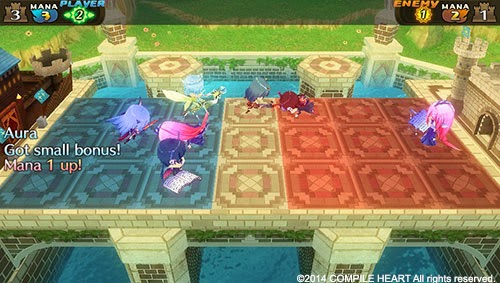This is an announcement that would normally inspire calamitous cheers from the growing otaku and Japanese-game aficionado crowd, although the celebration quit as soon as it had begun. Following the localization announcement, Idea Factory, the western publisher for Monmon, stated that several of the game's cards, particularly those which reflect younger women, had to be removed for the localized edition, an announcement that immediately severed Monmon's already limited western audience.
There are those who are "just happy that the game is getting localized," and those who find the censorship "total bullsh*t, and I'm not buying this gimped product." Each side has valid arguments, but what is most important here is what this censorship proves about the western videogame market, and how it exemplifies the secondary tier videogames still remain in as both an entertainment media, and artistic expression.
For those wondering, the cards cut from the western editions include these below.
 |
| Mostly "Loli" types have been Removed |
In comparison to other media, such as the novel The Lovely Bones, which has a detailed scene involving rape of a pre-pubescent girl, or the clothing line, Boobs and Bloomers, which proudly models pre-pubescent girls in lingerie, it is videogames, and videogames alone, that are still suspect to extreme scrutiny and censorship especially in relation to sex and the portrayal of women. As literature and art are accepted as "honest portrayals," and modeling and film as "representative reality," why is it that videogames are still being pummeled by the undefined mandates of the Entertainment Software Rating Board (ESRB) and assumed consumer's response?
 |
| You're Still Getting This. Mostly. |
On the other hand though, there is much love for unique game design, and increasingly so is the creativity of developers being admired by gamers, consistently taking precedence over judgement of the actual game. With the rise of games being less about gameplay and "fun" (particularly on the PC scene), but instead context and expression, where modern gaming stands is increasingly towards that of the artistic and independent, and not the commercial and base.
And yet, here we are: an eastern-sensibilities product, a product that already has a limited audience, and an audience that is both aware and admiring of the sexual imagery that models it, is being censored to validate the commercial and cultural-conservativism that models foreign territories. It's an action that neglects both its own team, the very people who drew and created the artwork that plays so significant a portion in Monmon, as well as its consumers, the people who are drawn to Monmon particularly because of it representing distinctly foreign sensibilities and showcasing artwork wholly unique from their own culture. What this represents isn't so much the fallacy of niche-based products, but the self-destruction of cultural boundaries in a market that is globally based. By having products representative of distinctly cultural items, the result of such a decision, as seen here with Monmon being censored following entry of foreign territories, is crisp and clear: damned if you do, and damned if you don't.
 |
| Best of Luck to You, Girls |

No comments:
Post a Comment